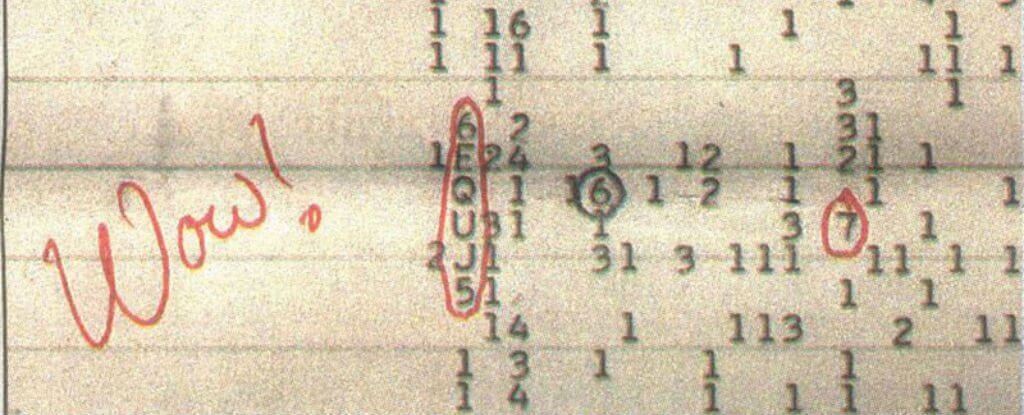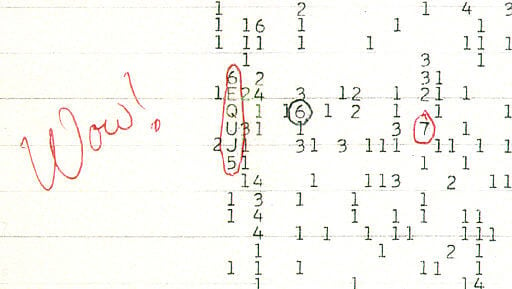- Get link
- X
- Other Apps

In August 1977, from space to Earth came a radio message from aliens. More precisely at that time, so many thought. The signal was detected by astronomer Jerry Eyman while working on the radio telescope "Big Ear" at Ohio State University. Listening to the radio signals was carried out within the framework of the SETI project, and at that time the telescope was aimed towards the group of stars of Chi of the constellation Sagittarius. Scanning the sky, Ayman caught a 72-second burst of radio waves. After a quick analysis, he circled the data about him in a circle and signed it as "Wow!". So the signal got its name.
Over the past 40 years, the signal "Wow!" Has been considered by many ufologists as direct evidence that we are not alone in this universe. Experts and ordinary people believed that we finally have evidence of the existence of extraterrestrial life.

However, Antonio Paris from the Florina College of St. Petersburg recently discovered an explanation for this mysterious signal. Its source is a pair of comets. The findings of the scientist were published by the Journal of the Washington Academy of Sciences.
The comets, known under the names 266P / Christensen and 335P / Gibbs, create around themselves giant (a few million kilometers) hydrogen clouds. The 72-second "Wow!" Signal with a wavelength of 21 cm was detected at a frequency of 1420 MHz, which corresponds to the radio frequency of the neutral hydrogen emission line.
The team of Paris decided to dig deeper and found out that at the time of receiving the signal, both comets were relatively close to each other, and its main source was the comet 266P / Christensen.
Despite the fact that this discovery will definitely upset the enthusiasts in search of aliens, it should be pointed out that the signal "Wow!" Is the most powerful unusual radio signal that we managed to get, which in turn means that we are able to accurately interpret signals and the sounds of the surrounding space. Of course, this also leaves us hope in our attempts to decode hundreds of "strange, alien" signals coming to us from distant stars almost every year.
Humanity has a whole arsenal of space-based detection facilities, much of which is actively used by the Institute for the Search for Extraterrestrial Intelligence (SETI). The main means are, of course, radio telescopes, and the most ambitious project at the moment to search for signals from extraterrestrial life is the so-called Project Phoenix.
For its implementation, SETI used the three largest radio telescopes: the Parks Observatory (diameter 64 meters), the radio telescope of the National Radio Astronomy Observatory in West Virginia (diameter 40 meters), and the radio telescope of the Arecibo Observatory in Puerto Rico (the world's largest radio telescope 300 meters in diameter ). In addition, with the support of American entrepreneur Paul Allen, the Allen Telescope Array network was created.
The article is based on materials .
- Get link
- X
- Other Apps
Comments
Post a Comment